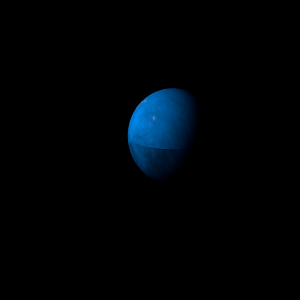|
|
Space Astro
|
Info for exoplanet "Dyssete"
| Scientific (actual) data |
|---|
| Name | Kepler-1489 b |
| Planet status | Confirmed |
| Radius | 0.158 |
| Orbital period | 82.2948 |
| Discovered | 2016 |
| Updated | 2021-02-05 |
| Tconj | 2455040 |
| Publication | Announced on a website |
| Detection type | Primary Transit |
| Alternate names | 2MASS J18451099+4427554 b, K03404.01, KIC 8409295 b, KOI-3404 b, KOI-3404.01, WISE J184510.99+442755.4 b |
| Star name | Kepler-1489 |
| Right ascension | 281.3° |
| Declination | 44.47° |
| Mag j | 13.677 |
| Mag h | 13.286 |
| Mag k | 13.247 |
| Star distance | 1283.05 |
| Star metallicity | -0.13 |
| Star mass | 1 |
| Star radius | 1.308 |
| Star sp type | G3IV-V |
| Star age | 4.07 |
| Star temperature | 5655 |
| Star alternate names | KIC 8409295, WISE J184510.99+442755.4, KOI-3404, 2MASS J18451099+4427554 |
| Wikipedia article | Kepler-1489 b |
Back
| |
| Fictional info (?) |
|---|
| Suggested name | Dyssete |
| Planet type | Cold planet |
|
| Atmosphere | Helium | 98% |
| 2H2O | 0.52% |
| Sulfur dioxide | 0.51% |
| Methane | 0.0097% |
| Hydrogen deuteride (HD) | 0.00038% |
| Atmospheric pressure | 0.7 bar |
 |
| No known satellites |
| Google search for Dyssete |
|
Website by Joachim Michaelis
|
|
|
|